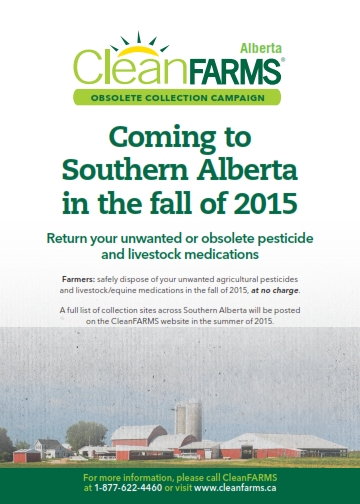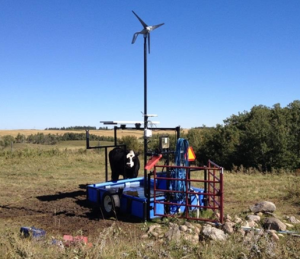
CURRENT CONSERVATION REPORTS
- CARA 2021 Conservation Report
Available only to CARA members. Call the office to become a member & get your copy today
ARCHIVED CONSERVATION REPORTS
- 2020 Conservation Report
- 2019 Conservation Report
- 2018 Conservation Report
- 2017 Conservation Report
- 2016 Conservation Report
- 2015 Conservation Report
- 2014 Conservation Report
- 2013 Conservation Report
- 2012 Conservation Report
- 2011 Shelterbelt Demo Report
- 2011 Tree Report
MORE INFORMATION
Eco-Buffers
Shelterbelts
- Prairie Shelterbelt Program
- Tree and Shrub Finder Tool
- Shelterbelt Planning & Design
- Shelterbelt Funding through RALP
- Find an Arborist
Livestock Watering Systems
- Drought Support: Temporary Livestock Water Assistance
- Water Wells That Last Manual
- Pasture Watering Systems
- Remote Watering Systems for Livestock Factsheet
- Planning for a Water System
[one_third]
Ducks Unlimited: Cashing in on a Slough of Benefits
*technical difficulties with the speakers microphone
Buffer Zones for a Healthy Watershed
Buffer zones are areas of land, adjacent to a watercourse or waterbody, kept in permanent vegetation. Buffers protect water quality by slowing the flow of water, thus facilitating the trapping of sediment, organic matter, nutrients and pesticides. The vegetation that forms an essential part of a buffer zone uses some of the trapped nutrients for growth and provides critical habitat for micro-organisms. Micro-organisms attached to the soil and vegetation in the buffer zone also use the nutrients and organic matter for their growth and reproduction, and in the process transform some contaminants into less harmful forms.
Buffer Zones for a Healthy Watershed pdf
 Agriculture Pesticide/Medication Free Waste Collection
Agriculture Pesticide/Medication Free Waste Collection
Click Here to see the Schedule
CleanFARMS, in partnership with the Canadian Animal Health Institute, will be operating collection programs for both obsolete pesticides and livestock medications in the Okanagan, Interior and Peace Region of British Columbia, Southern Alberta, Northern Saskatchewan, Nova Scotia and New Brunswick in 2015.
What products are usually accepted?
-
- Obsolete or unwanted agricultural pesticides (identified with a Pest Control Product number on the label).
- Livestock medications that are used by primary producers in the rearing of animals in an agricultural context (identified with a DIN number, Ser. Number or Pest Control Product number on the label).
.
.
.
.
[divider style=”medium’]
Monitoring Remote Livestock Watering Systems
Ken Janzen, ARD
Some live stock producers use remote watering systems as an alternative to watering directly out of creeks, dugouts, and springs.Since these systems can be far from the power grid batteries are typically used to power these remote watering systems. Producers have been reluctant to adopt this technology because of the need to check the systems for battery recharge and pump functionality and due to a general distrust in the technology itself. Failure of either the batteries or the pump would leave livestock without water for extended periods of time.
stock producers use remote watering systems as an alternative to watering directly out of creeks, dugouts, and springs.Since these systems can be far from the power grid batteries are typically used to power these remote watering systems. Producers have been reluctant to adopt this technology because of the need to check the systems for battery recharge and pump functionality and due to a general distrust in the technology itself. Failure of either the batteries or the pump would leave livestock without water for extended periods of time.
Alberta Agriculture and Rural Development, with funding from the Growing Forward 2 Stewardship Program, identified existing alarm systems that could be installed on remote livestock watering sites and evaluated a small selection of these systems.
Methods
Three alarm systems were chosen to install on remote watering sites.These included the Beacon Light, Cellular and Satellite systems. Producers using remote livestock watering systems were identified and asked to participate in the evaluation of these alarm systems. The alarm systems were installed at the remote watering sites and configured to notify the producers in the event of low water levels in the trough and/or low battery voltages.The producers provided feedback on the effectiveness of the monitoring systems.
Results and Discussion
Initial feedback from producers testing these systems has been favorable.Producers appreciate that the monitoring system alerts them when problems occur.This gives the producers more confidence in their remote watering systems and allows them to reduce the frequency of site visits required to check on the remote watering systems.
Alberta Agriculture and Rural Development will continue to test the monitoring systems on livestock watering networks and collect producer feedback. A fact sheet is currently being developed to provide producers with information on monitoring systems for remote livestock watering sites.
If you would like more information on this project, contact Ken Janzen at ken.janzen@gov.ab.ca.
Resource
Ken Janzen has graciously shared his Remote Monitoring of Livestock Watering Systems Presentation with us.